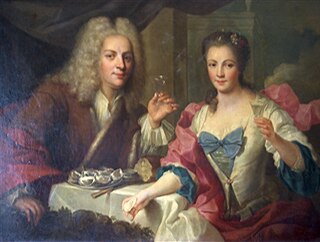 W
WThe Fossil and Petrology collections are two heritage-listed fossil and petrology collections located at 947-953 Londonderry Road, Londonderry, City of Penrith, New South Wales, Australia. The collections are owned by the NSW Department of Primary Industries, a department of the Government of New South Wales. It was added to the New South Wales State Heritage Register on 2 April 1999.
 W
WThe Gordon W. Prange Collection is the most comprehensive archive in the world of Japanese print publications issued during the early years of the Occupation of Japan, 1945–1949. The Collection is located in Hornbake Library at the University of Maryland.
 W
WThe Julius S. Held Collection of Rare Books is a research collection of 283 volumes which is held in the Library of the Clark Art Institute.
 W
WThe Mobile Cook's Galley, part of the Museum of the Riverina, is a heritage-listed former mobile field kitchen and now museum collection and museum exhibit located in the Wagga Wagga Botanic Gardens, Baden Powell Drive, Wagga Wagga, in the City of Wagga Wagga local government area of New South Wales, Australia. It was designed and built in 1934 by Jim McGilvray and Harold Fife. It is also known as the Chaff cutting train. The property is owned by City of Wagga Wagga. It was added to the New South Wales State Heritage Register on 24 December 2004.
 W
WThe French Art Collection in National Museum of Serbia consists of more than 250 paintings and more than 400 graphics and drawings, from the 16th to early 20th century, including the Šlomović Collection. Among the French painters represented in the collection are Robert Tournières, Hubert Robert, Sébastien Bourdon, Eugène Delacroix, Gauguin, Renoir, Henri de Toulouse-Lautrec, Matisse, Monet, Cézanne, Degas, Jean-Baptiste-Camille Corot, Mary Cassatt, Paul Signac, Maurice Utrillo, Auguste Rodin, Georges Rouault, Pierre Bonnard, Pissarro, Odilon Redon, Gustave Moreau, Honoré Daumier, Eugène Carrière, Maurice de Vlaminck, André Derain, Raoul Dufy, Suzanne Valadon, Eugène Fromentin, Émile Bernard, Forain, André Dunoyer de Segonzac, Robert Delaunay, Pascin, Rosa Bonheur, Marie Laurencin, Georges Dufrénoy. The graphic and etching collection includes work by Charles Le Brun, Sébastien Bourdon, Jacques Callot, Charles-François Daubigny, Degas, Delacroix, Jean-Baptiste-Camille Corot, Le Corbusier, Renoir, Jean Cocteau, Eugène Carrière, etc..
 W
WPaintings in Hospitals is an arts in health charity in the United Kingdom. Founded in 1959, the charity's services include the provision of artwork loans, art projects and art workshops to health and social care organisations. The charity's activities are based on clinical evidence demonstrating health and wellbeing benefits of the arts to patients and care staff.
 W
WThe Perfume Museum of Barcelona, officially known in Catalan as Museu del Perfum, was founded in 1961 in order to exhibit an evolution of perfume vessels throughout the ages.
 W
WRail Paybus FP1 is a heritage-listed former railbus and now museum exhibit at NSW Rail Transport Museum Barbour Road, in the outer south-western Sydney town of Thirlmere in the Wollondilly Shire local government area of New South Wales, Australia. It was designed by the New South Wales Government Railways Road Motor Section and built in 1937 by Waddingtons Ltd (body), Ford Motor Co.. It is also known as Rail Bus and Rail Pay Bus FP1. The property is owned by Rail Corporation New South Wales, an agency of the Government of New South Wales. It was added to the New South Wales State Heritage Register on 26 September 2003.
 W
WThe Santos Dumont Collection, also known as Alberto Santos Dumont Collection, is a collection of about 1,500 items linked to Santos Dumont, under the guard of the Museu Paulista. The collection includes several types of material, including texts, objects and iconographies of the Brazilian inventor, in particular 323 images about the aeronautical trajectory of Santos Dumont. It is one of the best known funds of at least 123 that make up the Coleção do Museu Paulista. The collection was donated by the family after the inventor's death in 1932.
 W
WA scientific collection is a collection of items that are preserved, catalogued, and managed for the purpose of scientific study.
 W
WThe Scottish Royal tapestry collection was a group of tapestry hangings assembled to decorate the palaces of sixteenth-century kings and queens of Scotland.